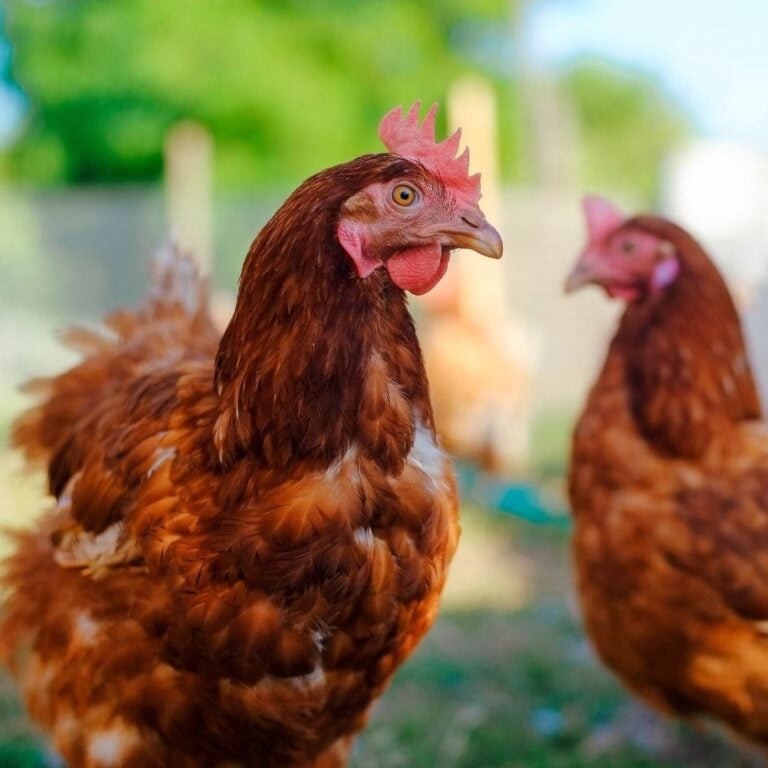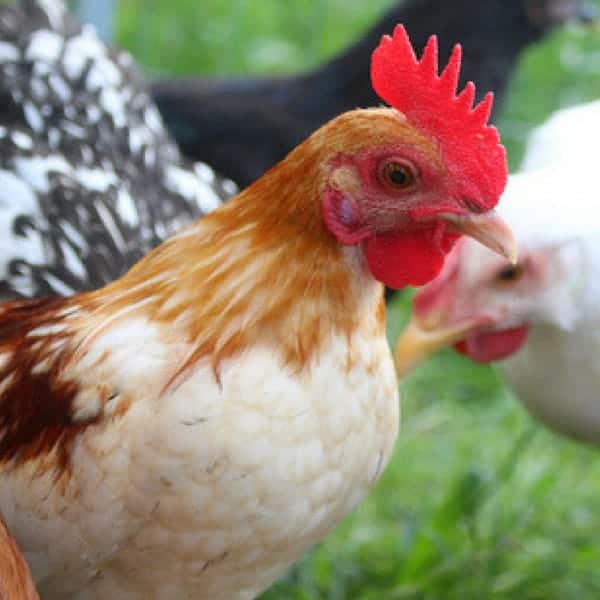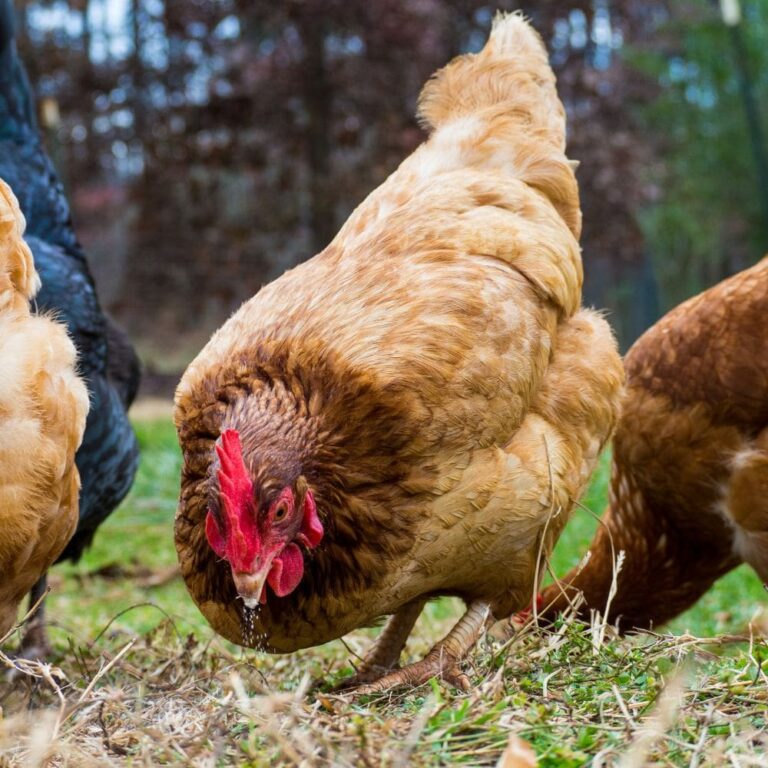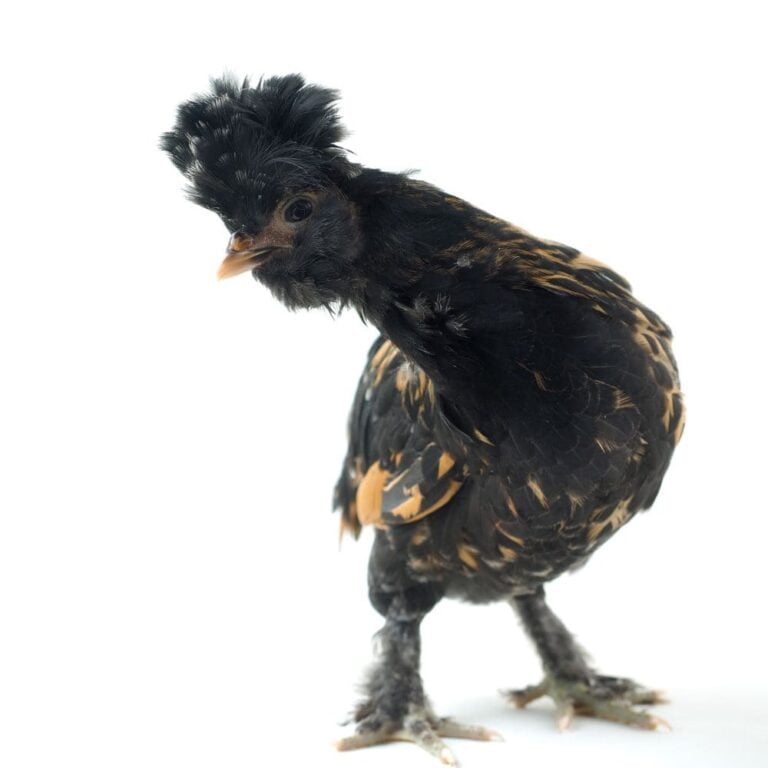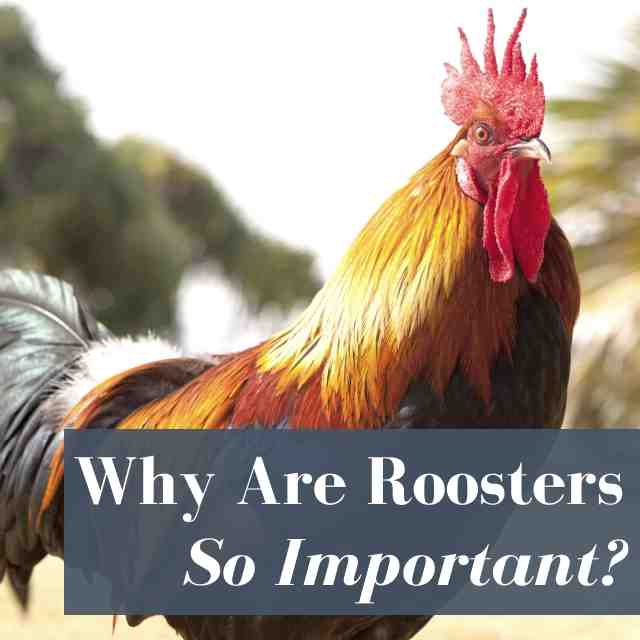It seems as if there are as many colors of chickens as there are unique and diverse groups of people. It’s a beautiful thing in both cases. Blue Orpington chickens are one of many, many breeds, but still an amazing breed and has a lot to offer.
You might be wondering not only about the attributes of this breed, but also what the difference is between a Blue Orpington and a Lavender Orpington. I did. Let’s find out now!
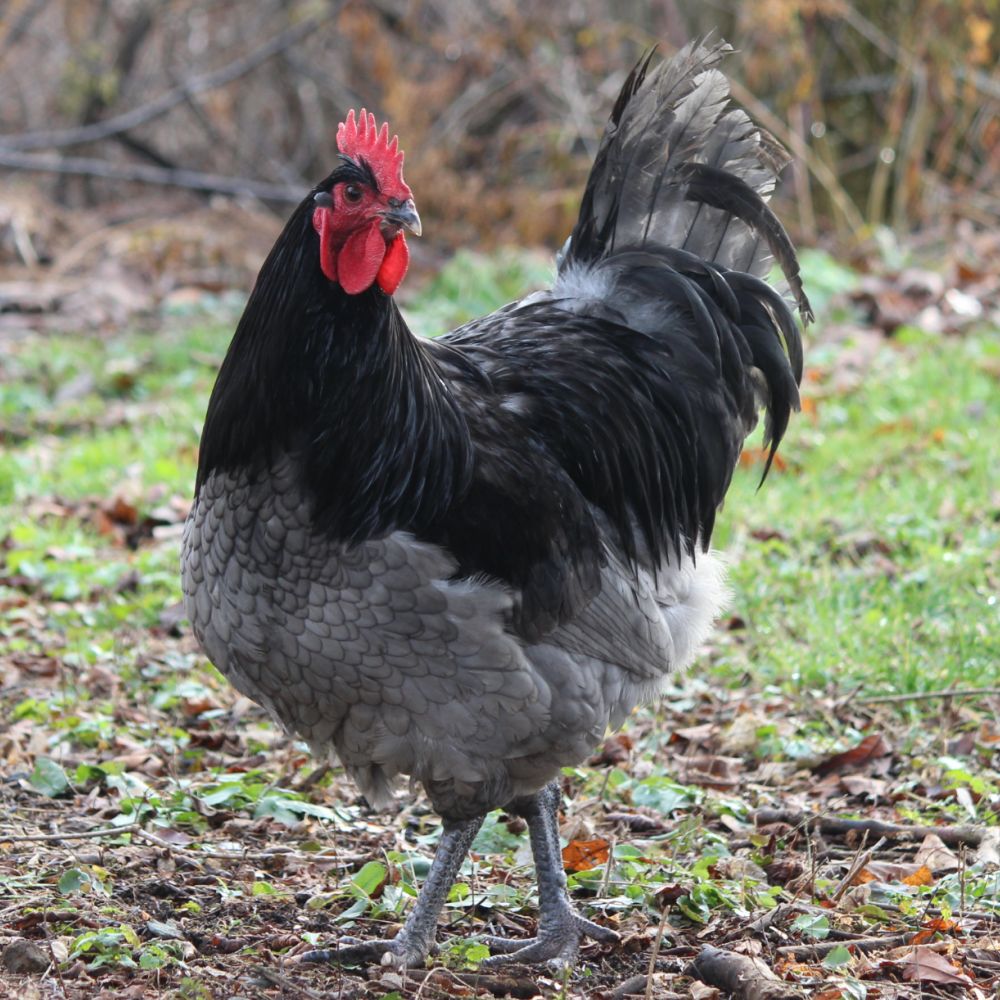
Table of Contents (Quickly Jump To Information)
Blue Orpington History Snapshot
The Orpington originates from Great Britain in the late 1800’s during the end of the “Hen Fever” that ignited an interest in peculiar breeds of chickens. This breed was developed by William Cook, a coachman who lived in Orpington, Kent. The Orpington was developed by crossbreeding a Minorca and a Black Plymouth Rock.
Oklahoma State University
You can trace chicken breeding WAY back in time. And during certain eras, there were many attempts to develop the perfect dual-purpose breed. The Blue Orpington is one such breed, and I think William Cook was successful. The Blue variety was a result of further development beyond the basic Orpington.
How Many Colors of Orpington Chickens Are There?
Opingtons used to be on the Livestock Conservancy’s endangered list, but it is no longer on this list. The breed is recognized by the American Poultry Association in four varieties: Buff, White, Black, and (of course) Blue. There are several other colors, however, such as Chocolate, Gold Laced, Lavender, and more.
Blue Orpington Appearance
If you are imagining a bright Smurf-colored chicken…think again. If you want to learn more about blue chickens read this article. Blue, in the chicken world, isn’t really blue – but it is pretty. It’s more of a slate gray.
They are similar to Lavender Orpingtons in color, only their feathers usually have dark edges. Lavender Orpingtons have a more even color and tend to be a lighter gray. Perhaps the biggest difference is that Blue Orpingtons do not breed true so you can get various coloring in offspring such as Splash and Black. Lavenders breed true but both parents have to have the lavender gene.
The females plumage is an even slate with dark lacing. The males plumage can have a dark slate hackle and saddle which is quite stunning. I must admit, I think the roosters steal the show (but that’s pretty typical in the bird world isn’t it?).
This breed appears larger than they are due to their fluffy feathers but they are still good-sized chickens. These fluffers are great in cold weather because of their fluffiness.
The beak, eyes, and legs usually coordinate with the body color in the slate color palette.
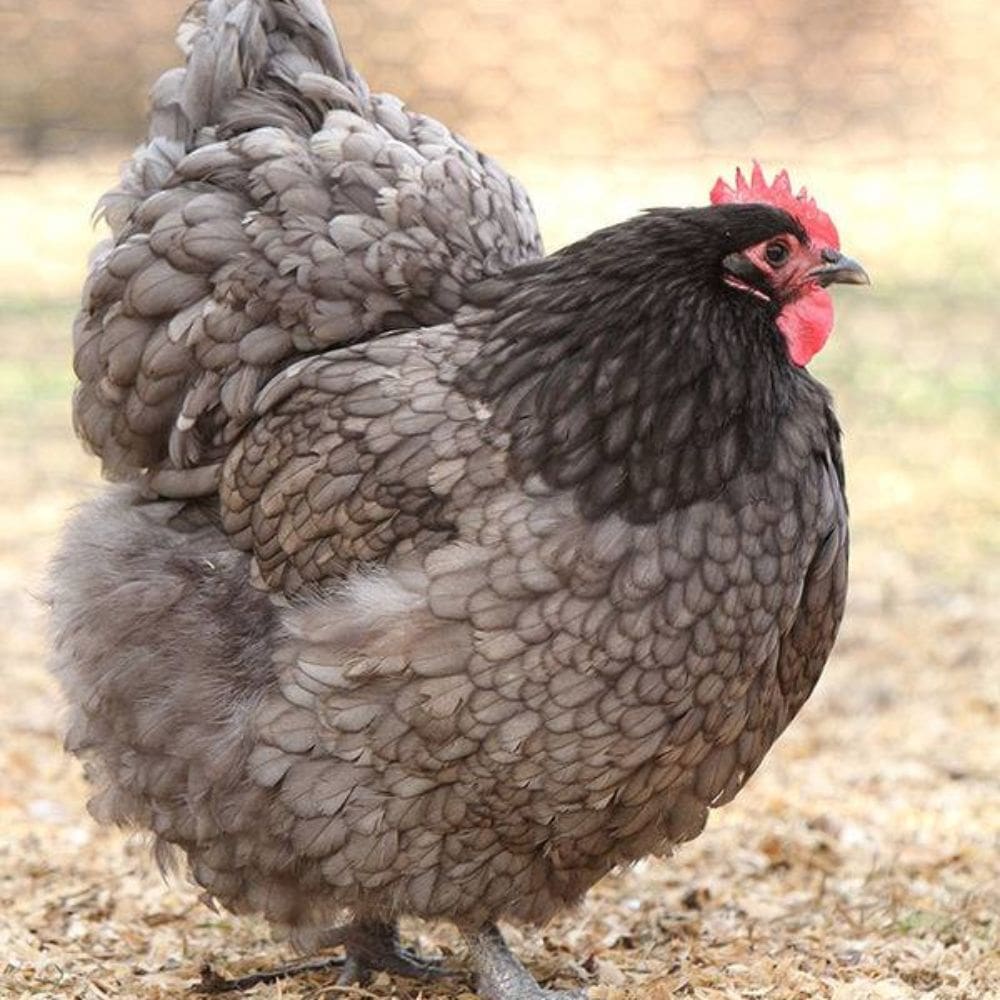
Blue Chicken Genetics
It’s complicated for most of us common folk. But it’s also interesting. The American Poultry Association has a great description. Below is a snippet of that.
Many individuals are curious about the difference between birds with self-blue plumage color and blue plumage color. Crossing blue birds with self-blue birds is typically discouraged as the offspring produced do not adhere to the standard for those breeds that have the two color varieties approved. Let’s explore the differences in the blue gene (Bl) and the lavender gene (lav).
American Poultry Association
Read all the fun details about breeding blue genetics and how it works here.
Blue Orpington Chicken Temperament
This is one of the best parts of this breed – their temperament! They are super friendly and wonderfully docile. These birdies are truly lap birds, especially if you spend time with them and give them nutritious treats! Here chicky chicky!
This breed can be quite broody, which is great if you want to hatch some chicks the natural way. Beyond that, they are excellent mothers. Here’s a great article about this topic called Broody Hen – To Help of Hinder, You decide.
Blue Orpington Egg Production
Blue Orpington hens lay around 200 to 280 eggs per year! I’d say they are excellent layers. Nice breakfast-producing buddy for sure. They lay light-colored eggs ranging from off-white to light brown.
Are Blue Orpingtons Good for the Table?
Yes, they aren’t just for egg laying, they are a great dual-purpose chicken. They way an average of 7 to 9 pounds which is a decent weight for a dual-purpose bird. Dual purpose was the goal of William Cook who developed this breed.
Caring For a Blue Orpington
- Provide fresh, clean water at all times (treat them with warm water during super cold weather)
- Feed a high protein feed with quality ingredients like this
- Ensure they have adequate shelter and protection from predators
- Boost their immune system with vitamins and minerals
Summary
Blue Orpington chickens are great at laying eggs, make a decent table bird, and are docile and beautiful. In other words, they are great all-around chickens. They can be broody which may be a con if you do not want a broody hen.
If you have trouble finding a Blue Orpington, or simply want to explore other similar breeds, you might research other varieties of Orpingtons. All of them have similar attributes. Read this article to learn more.
Where to Buy Blue Orpington Chickens
Blue Orpington chickens can be a bit challenging to find. Other more common varieties like Buff or Lavender are a little easier to find. Below are 3 Hatcheries to get you started but you can also check with local breeder groups on Facebook as well.
1. Meyer Hatchery
Find more information and prices here: Meyer Hatchery
Meyer Hatchery is based in Polk, Ohio, and boasts itself as the “premier Poultry Source.” Priding itself on customer service and availability, Meyer Hatchery provides a variety of chicken breeds to meet customer demands for color and diversity. They welcome the mixing and matching of breeds of the same poultry type to meet minimum order requirements for safe shipping. To help with orders, they have a calendar of hatchings.
Meyer has a variety of means of communication, including multiple phone numbers, fax, and email. They also run a blog that covers everything from breeds to plant pairing with chickens, feed, cooking recipes, fowl entertainment, and survival tips. They have an abundance of breeds available for sale, including the much-coveted Blue Orpingtons.
And if you’re looking for another great resource when it comes to feeding your new Blue Orpingtons, be sure to pick up some of this chick starter. It’s loaded with all the nutrients your birds need to get off on the right foot!
Advantages
- Website is up-to-date in real time.
- Accepts checks and credit cards
- Guarantees gender of chicks either through refund or store credit.
- Optional vaccination.
- Member of the National Poultry Improvement Plan (NPIP), and provide NPIP VS Form 9-3 free of charge.
- Offer orders of over 100 chicks.
Disadvantages
- Limited store hours that change with the season.
2. Hoover’s Hatchery
Find more information and prices here: Hoover’s Hatchery
Hoover’s Hatchery is a massive poultry production hatchery located in Rudd, IA. Hoover’s supplies many farm and garden supply stores in the United States with their chicks, making them a smart choice if you want to skip the middleman and order from the hatchery directly.
Plus, Hoover’s offers free shipping on practically everything you order. You’ll have to buy at least 15 chicks; so Hoover’s might not be the best option if you live in a city with chicken restrictions. However, as long as you’re willing to buy in bulk, it’s a smart choice. You can even mix and match your order by adding other birds of other chicken breeds along with poultry species like pheasants, turkeys, guineas, ducks, and more.
They offer an Orpington assortment of Silver, Blue Chocolate, Jubilee, and Mottled. They do not guarantee the exact colors in the assortment.
Advantages
- Excellent guarantee and refund policy in case of shipping problems
- Hatches chicks during the winter, one of the few hatcheries to do so
- Discounts on increased orders up to 25+.
Disadvantages
- Large minimum order (15 to 20 depending on size)
- They usually only have an Orpington assortment available
3. My Pet Chicken
Find more information and prices here: My Pet Chicken
My Pet Chicken got started in 2005 by Traci Torres and her husband, Derek Sasaki, two novices to the chicken world who had a dream to help other novices in their farmers’ goals. To do this, they put free how-to information on the web and offered some unique products and services.
The website launched in 2005 and in 2006, their flock had grown to the point to where they started offering chicks for sale from their headquarters in Monroe, CT. The site has been mentioned in other publications and serves tens of millions of page views per year. They offer a mix of Blue, Black, and Splash Orpingtons but have limited availability and the website should be consulted for the next available batch.
Advantages
- Offers Marek’s vaccinations on all standard chicks at the click of a button.
- Consistent hours of operation.
- A good source for questions about ordering chickens, chicken care, and about raising chickens.
- Full refund for any bird that has been incorrectly sexed.
Disadvantages
- Limited availability.
- Does not have a storefront

A happy wife, mother, teacher, writer, hobby farmer, lover of chickens, and contributor to Pampered Chicken Mama!


